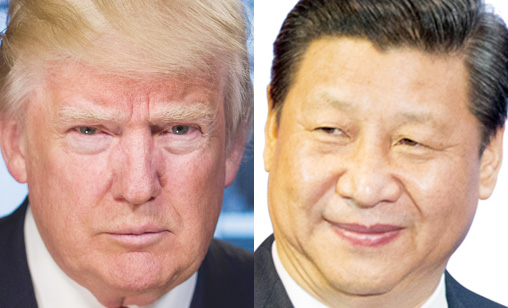Cargo Update
Asia Pacific freighter fleet setback by tariff wars
The latest Asia-Pacific air cargo statistics reflect the negative impact of the U.S./Sino tariff war. Associate editor, Tom Ballantyne, reports.
June 1st 2019
When U.S. president Donald Trump imposed higher tariffs on Chinese goods entering the U.S. on May 10, his timing could not have been worse for the Asia-Pacific air cargo business. Read More »
On that fateful Friday, Trump increased tariffs from 10% to 25% on US$200 billion of Chinese goods destined for the U.S. Shortly afterwards, China retaliated by setting import tariffs that ranged from 5% to 25% on 5,140 U.S. products on a revised $60 billion target list. The rules now apply.
 |
The higher tariffs were announced a few days after the International Air Transport Association (IATA) released its air freight data for March. Global trade volumes had declined by 1% in the last year, the association said, and added global economic activity and consumer confidence were continuing to weaken. The export order component of manufacturing’s Purchasing Managers Index (PMI) reported global export orders had been declining since September 2018.
IATA’s figures were mirrored by the Association of Asia Pacific Airlines (AAPA), which said the region’s air freight business was lower by 3.4% in March compared with the same period a year ago.
“During the first quarter of the year, air cargo demand fell by 5.6% reflecting cautious market sentiment linked to unresolved trade tensions, particularly between the United States and China,” said AAPA director general Andrew Herdman. “The ongoing shift in air cargo for e-commerce shipments of consumer goods should provide some level of support to air cargo demand, although prevailing conditions remain weak.”
The trade war between the world’s two biggest economic powers threatens to keep the air freight sector in the doldrums for some time to come. The two countries are sparring over U.S. allegations China steals technology and pressures American companies into handing over trade secrets, part of an aggressive campaign to turn Chinese companies into world leaders in robotics, electric cars and other advanced industries.
Chinese authorities have expanded retaliation beyond imports by targeting operations of U.S. companies in China. Regulators have slowed customs clearance for shipments and delayed issuing licenses in finance and other industries.
The Chinese government has an array of other mechanisms, including launching tax, anti-monopoly or other investigations that could impede company operations. Already, the impact is being felt. In April, Chinese exports to the U.S declined 3% from a year ago and are off by 9.7% since the start of 2019. Imports of American goods tumbled 26%.
The extent this will impact the air freight sector remains to be seen. Cathay Pacific Airways CEO, Rupert Hogg, speaking during at a ceremony to mark the rebranding of the airline said: “It is definitely the case that this year has been lower than last year and the numbers sort of speak for themselves. Demand is down. But it’s not hugely down or catastrophic. We don’t know what is going to happen. It’s too early to say.” Air cargo provides a quarter of the carrier’s revenue.
Analysts are confident the air freight sector will expand. A new report from Cargo Facts Consulting (CFC) said: “We predict long-term air cargo traffic growth to come in just under 4% per year”, its managing director, Frederic Horst, said. He added that “this translates into demand for more than 3,300 aircraft from feeders to large jets”.
In the next two decades, CFC forecasts 2,380 jet freighters and 421 feeder aircraft will be added to the global freighter fleet. Roughly half of these additions will replace retiring aircraft.
Factory built freighters will make up 34% of aircraft additions in the sector with large differences across individual categories. “Operating economics, particularly in the large widebody segment, mean production freighters are king,” Horst said.
“In the narrow body segment we foresee all freighters will continue to be converted passenger aircraft,” he said and added the grounding of the 737 MAX fleet has created short to medium-term disruptions that are delaying the transition from older generation to new generation narrow-body freighter planes.